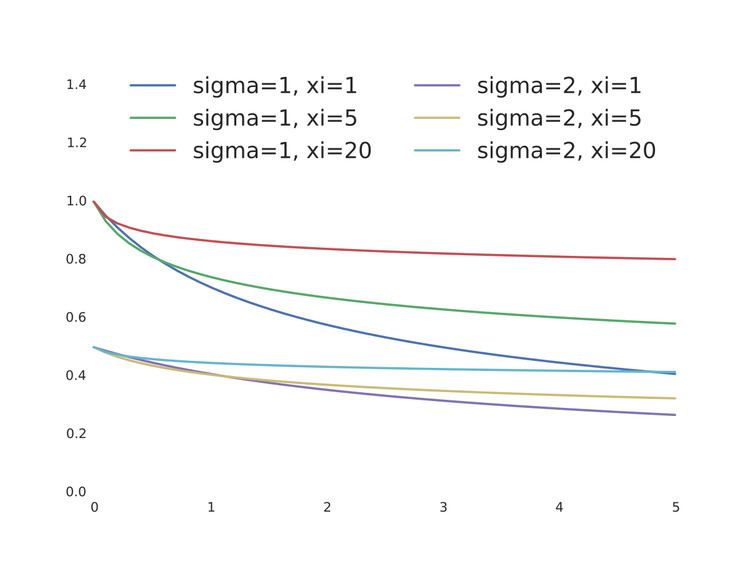 | ||
Parameters μ
∈
(
−
∞
,
∞
)
{\displaystyle \mu \in (-\infty ,\infty )\,}
location (real)
σ
∈
(
0
,
∞
)
{\displaystyle \sigma \in (0,\infty )\,}
scale (real)
ξ
∈
(
−
∞
,
∞
)
{\displaystyle \xi \in (-\infty ,\infty )\,}
shape (real) Support x
⩾
μ
(
ξ
⩾
0
)
{\displaystyle x\geqslant \mu \,\;(\xi \geqslant 0)}
μ
⩽
x
⩽
μ
−
σ
/
ξ
(
ξ
<
0
)
{\displaystyle \mu \leqslant x\leqslant \mu -\sigma /\xi \,\;(\xi <0)} PDF 1
σ
(
1
+
ξ
z
)
−
(
1
/
ξ
+
1
)
{\displaystyle {\frac {1}{\sigma }}(1+\xi z)^{-(1/\xi +1)}}
where
z
=
x
−
μ
σ
{\displaystyle z={\frac {x-\mu }{\sigma }}} CDF 1
−
(
1
+
ξ
z
)
−
1
/
ξ
{\displaystyle 1-(1+\xi z)^{-1/\xi }\,} Mean μ
+
σ
1
−
ξ
(
ξ
<
1
)
{\displaystyle \mu +{\frac {\sigma }{1-\xi }}\,\;(\xi <1)} Median μ
+
σ
(
2
ξ
−
1
)
ξ
{\displaystyle \mu +{\frac {\sigma (2^{\xi }-1)}{\xi }}} | ||
In statistics, the generalized Pareto distribution (GPD) is a family of continuous probability distributions. It is often used to model the tails of another distribution. It is specified by three parameters: location
Contents
Definition
The standard cumulative distribution function (cdf) of the GPD is defined by
where the support is
Differential equation
The cdf of the GPD is a solution of the following differential equation:
Characterization
The related location-scale family of distributions is obtained by replacing the argument z by
for
The probability density function (pdf) is
or equivalently
again, for
The pdf is a solution of the following differential equation:
Characteristic and Moment Generating Functions
The characteristic and moment generating functions are derived and skewness and kurtosis are obtained from MGF by Muraleedharan and Guedes Soares
Special cases
GPD is quite similar to the Burr distribution.
Generating generalized Pareto random variables
If U is uniformly distributed on (0, 1], then
and
Both formulas are obtained by inversion of the cdf.
In Matlab Statistics Toolbox, you can easily use "gprnd" command to generate generalized Pareto random numbers.
